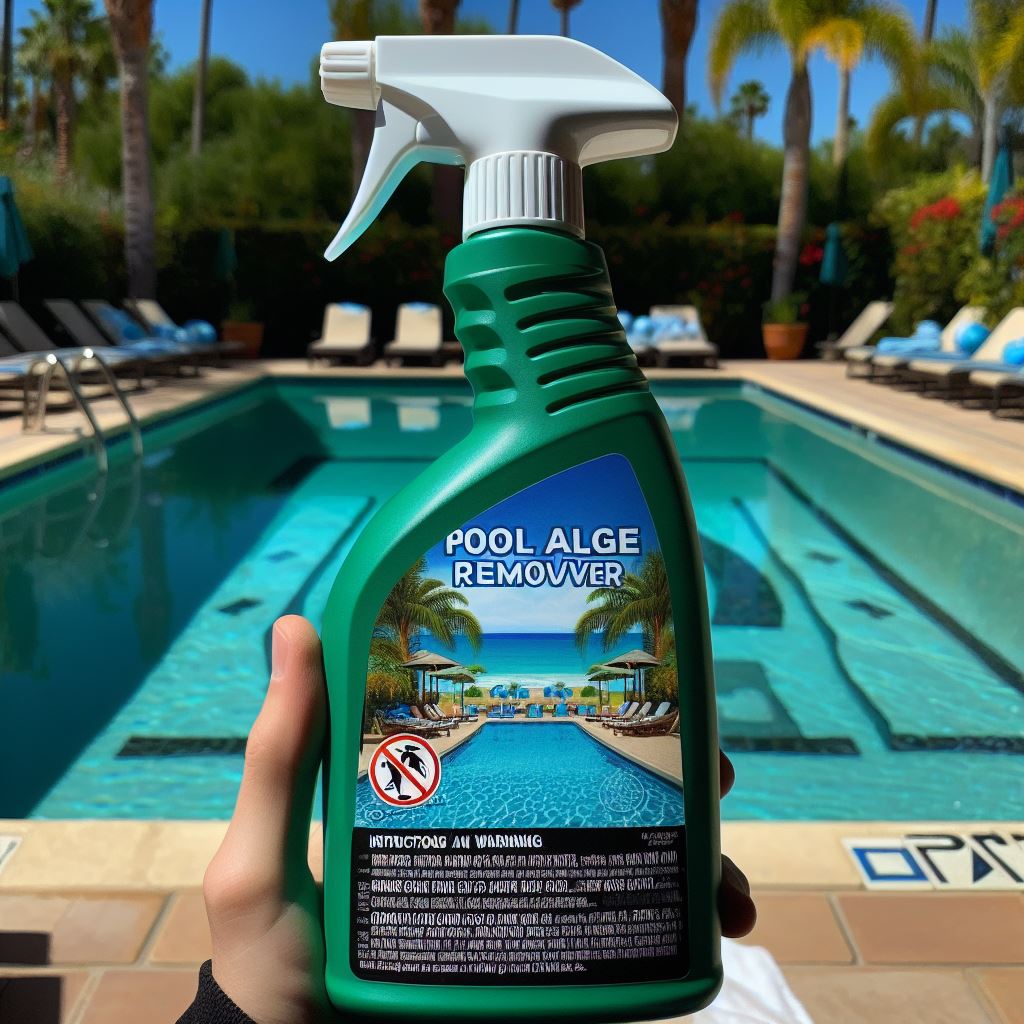The battle against pool algae requires strategic weaponry, and choosing the right algaecide is a crucial aspect of maintaining a pristine swimming pool. In this comprehensive guide, we will delve into the factors and considerations that should guide your decision when selecting a pool algaecide. From understanding different types to application methods, join us on a journey to make an informed choice for a crystal-clear and algae-free pool.

Types of Pool Algaecides
Quaternary Ammonium Compounds
Commonly known as “quats,” these algaecides are effective against a broad spectrum of algae.
They work by disrupting the cell walls of algae, preventing their growth and reproduction.
Polymeric Algaecides
Long-lasting and effective, polymeric algaecides create a barrier on pool surfaces, inhibiting algae colonization.
They are particularly suitable for preventing the return of persistent algae.
Metallic Algaecides
Copper-based algaecides are widely used for their quick and effective algae-killing properties.
However, careful monitoring is essential to prevent staining caused by excessive metal levels.
Algae Type and Severity
Green Algae
Green algae are the most common pool invaders, thriving in the presence of sunlight.
Quats and copper-based algaecides are effective against green algae.
Yellow or Mustard Algae
Resilient and often resistant to regular algaecides, mustard algae require specialized treatment.
Copper-based algaecides and polymeric formulations are recommended for tackling mustard algae.
Black Algae
Known for its deep-rooted structure, black algae demand persistent treatment.
Copper-based algaecides and vigorous brushing are essential for combating black algae.
Compatibility with Pool Chemistry
pH Levels
Ensure that the chosen algaecide is compatible with the pool’s pH levels.
Some algaecides may be more effective in specific pH ranges, so it’s crucial to check manufacturer recommendations.
Chlorine Levels
Understand how the algaecide interacts with chlorine levels.
High chlorine levels may reduce the effectiveness of certain algaecides, necessitating adjustments in chlorine usage.
Application Methods
Direct Pouring
The simplest method involves pouring the algaecide directly into the pool.
This is effective for spot treatments or preventive measures.
Pre-dilution
Diluting the algaecide with water before application allows for more even distribution.
Pre-dilution is suitable for large pools and widespread algae infestations.
Use of Floater or Feeder
Some algaecides are designed for use in floaters or feeders, providing a slow and continuous release.
This method is convenient for long-term algae prevention.
Residual Effect and Longevity
Residual Effect
Consider algaecides with residual effects that persist after application.
Residual algaecides continue to provide protection against algae regrowth.
Longevity
Evaluate the longevity of the algaecide’s effectiveness.
Some formulations offer extended protection, reducing the frequency of application.
Environmental Impact
Biodegradability
Opt for algaecides that are biodegradable and environmentally friendly.
Eco-conscious choices minimize the impact on aquatic ecosystems.
Non-Copper Alternatives
If concerned about copper levels, explore non-copper alternatives.
Polymeric algaecides and some quat formulations provide effective alternatives.
Manufacturer Recommendations and Reviews:
Follow Guidelines
Adhere to the manufacturer’s guidelines for dosage and application.
Overdosing can lead to undesirable effects, including damage to pool surfaces.
User Reviews
Explore user reviews to gain insights into the effectiveness of different algaecide products.
Real-world experiences can guide your decision-making process.
Prevention Strategies
Regular Maintenance
Implement a routine pool maintenance schedule, including proper filtration and water circulation.
Regular maintenance reduces the likelihood of algae growth.
Correct Water Balancing
Maintain proper water balance with appropriate pH, alkalinity, and sanitizer levels.
Balanced water creates an environment less conducive to algae development.
Conclusion
In the quest for a pristine and algae-free swimming pool, selecting the right algaecide is a crucial decision. Understanding the types of algae, compatibility with pool chemistry, application methods, and environmental impact are key factors in making an informed choice. Whether combating green, yellow, or black algae, the right algaecide, when chosen wisely, becomes a powerful ally in the ongoing battle for pool clarity and cleanliness.

 Instant
Quote
Instant
Quote Email
Us
Email
Us